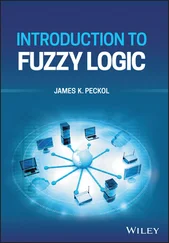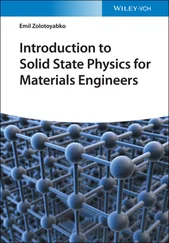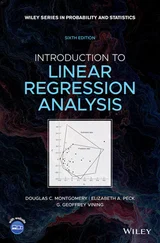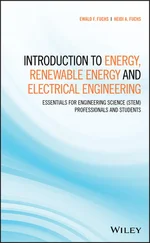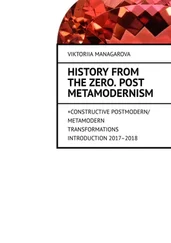1 Cover
2 Preface
3 1 Introduction1.1 What Is Desalination? 1.2 Aims of Desalination Processes 1.3 Desalination Processes 1.4 Desalination Technologies 1.5 Which Desalination System Is the Best? 1.6 Thermo‐Physical Properties of Water References A. Review Questions
4 Part I: Thermal Desalination Systems 2 Multi‐effect Evaporator (MEE)2.1 Introduction 2.2 Vaporization 2.3 MEE Processes 2.4 MEE Configurations 2.5 Mathematical Modeling Algorithm for Thermal Systems 2.6 MEE Mathematical Model 2.7 MEE Integrated Auxiliary Devices 2.8 Characteristics of MEE Desalination Systems 2.9 MEE Energy Consumption and Cost References 3 Multi‐stage Flashing (MSF) 3.1 Flashing Stage 3.2 MSF Once‐Through Configuration MSF–OT 3.3 MSF–Brine Recirculation (MSF–BR) 3.4 MSF with Brine Mixer (MSF–BM) 3.5 Material of Construction References A. Review Questions B. Problems C. Essay, Design and Open‐Ended Problems 4 Vapor Compression: Thermal Vapor Compression (TVC), Mechanical Vapor Compression (MVC), and Mechanical Vapor Recompression (MVR) 4.1 Thermal Vapor Compression (TVC) 4.2 TVC Mathematical Modeling 4.3 Mechanical Vapor Compression (MVC) 4.4 SEE–MVC Mathematical Modeling 4.5 Mechanical Vapor Recompression (MVR) 4.6 Characteristics of VC Desalination System References
5 Part II: Membrane Desalination Systems 5 Pressure Gradient Driving Force: Reverse Osmosis (RO), Nanofiltration (NF), Ultrafiltration (UF), Microfiltration (MF) 5.1 Semipermeable Membrane: Properties and Modules 5.2 Membrane Modules (Configurations) 5.3 Natural Osmosis Phenomenon 5.4 Reverse Osmosis (RO) 5.5 Membrane Performance 5.6 RO System Components 5.7 RO Advantages and Disadvantages 5.8 RO Performance Using Software 5.9 RO Mathematical Model 5.10 Energy Recovery Device (ERD) 5.11 MF, UF, and NF Membranes: Materials and Applications References A. Review Questions B. Problems C. Essay, Design and Open‐Ended Problems 6 Electrical Potential Driving Force: Electrodialysis (ED), Electrodialysis Reversed (EDR) 6.1 Electrodialysis 6.2 Electrodialysis Principle 6.3 Conservation of Ionic Mass 6.4 ED Mathematical Modeling 6.5 ED Characteristics 6.6 Advantages and Disadvantages of ED 6.7 Electrodialysis Reversed (EDR) References A. Review Questions B. Problems C. Essay, Design and Open‐Ended Problems 7 Temperature Gradient Driving Force: Membrane Distillation (MD) 7.1 MD Processes and Configurations 7.2 MD Advantages and Disadvantages 7.3 Characteristics of Hydrophobic Membranes 7.4 Heat and Mass Transfer Models for DCMD References 8 Concentration Gradient Driving Force: Natural Osmosis, Forward Osmosis (FO), Pervaporation (PV), Dialysis 8.1 Forward Osmosis (FO) 8.2 Pervaporation (PV) 8.3 Dialysis 8.4 Summary: Membrane Desalination Systems References
6 Part III: Nonconventional Desalination Systems 9 Renewable Energy and Desalination: Solar, Wind, Geothermal 9.1 Solar Energy 9.2 Calculation of Solar Radiation on Inclined Surface 9.3 Wind Energy 9.4 Geothermal Energy 9.5 Geothermal Well Performance 9.6 Advantages of Geothermal Energy References Questions and Problems 10 Hybrid Desalination System 10.1 Case I: Cogeneration–MSF–RO Hybrid Desalination Systems 10.2 Case II: Hybrid SEF–Geothermal Desalination System 10.3 Case III: Hybrid MEE–Solar Desalination System (Adapted from [4]) 10.4 Case IV: Hybrid MD–RO Desalination System (Adapted from [5]) 10.5 Case V: Hybrid Humidification–Dehumidification Desalination System [6] References Essay, Design, and Open‐Ended Problems
7 Appendix A: Appendix AThermo‐Physical Properties of SeawaterThermo‐Physical Properties of Seawater
8 Index
9 End User License Agreement
1 f04 Table 1 Suggested desalination course plan (14 weeks).
2 Chapter 1 Table 1.1 Energy requirement for main desalination systems. Table 1.2 Water classification based on salinity content. Table 1.3 Secondary drinking water regulation [5]. Table 1.4 WHO standards for potable water [5]. Table 1.5 Thermo‐physical properties of typical seawater at 40 000 ppm and 20... Table 1.6 Standard seawater composition at salinity equal to ≈35 000 ppm.
3 Chapter 2 Table 2.1 Typical overall heat transfer coefficient in different types of eva... Table 2.2 Characteristics of MEE systems.
4 Chapter 3Table 3.1 Mathematical model assumptions.Table 3.2 Material of construction in MSF system.
5 Chapter 4Table 4.1 Construction materials of the MED–TVC plants.Table 4.2 Characteristics of thermal and mechanical desalination technologies...Table 4.3 Desalinated water calculation of 15 000 m 3/d production plant.
6 Chapter 5Table 5.1 Characteristics of membrane types [1].Table 5.2 Desalination systems corresponding to driving force type.Table 5.3 Characteristics of membrane modules [3].Table 5.4 Osmotic pressure for typical feed solutions (25 °C) [4].Table 5.5 Alshegaya properties [6].Table 5.6 Specifications of nanofiltration and RO membranes [8].
7 Chapter 6Table 6.1 Maximum concentration for different desalination processes.Table 6.2 Typical operation parameters for electrodialysis.Table 6.3 Principel properties of ion‐exchange membranes.Table 6.4 Advantages and disadvantages of ED compared with RO and NF.
8 Chapter 7Table 7.1 MD configuration, advantages, disadvantages, and area of applicatio...Table 7.2 Surface tension and thermal conductivity values for selected hydrop...Table 7.3 Contact angle values of some membrane selected materials at ambient...Table 7.4a Different types of fouling observed in MD studies.Table 7.4b Examples of MD applications.
9 Chapter 8Table 8.1 Composition between forward osmosis and reverse osmosis.Table 8.2 Aqueous solution osmotic pressure ( π DS), concentration ( C DS), ...Table 8.3 Development and performance of commercial FO membranes (performance...Table 8.4 Advantages and disadvantages of PV process.Table 8.5 Four types of driving forces.Table 8.6 An overview of various membrane operations.
10 Chapter 9Table 9.1 Environmental impacts of burning fossil fuels.Table 9.2 Comparative costs (SEC) for common renewable desalination systems[4...Table 9.3 Selected desalination plants that are integrated with renewable ene...Table 9.4 Sun facts [6].Table 9.5 Comparison of CSP collecting technologies [9].Table 9.6 Wind power classification.Table 9.7 Tip speed ratio design considerations [14].Table 9.8 Selection of turbine size and weight configuration [14].Table 9.9 A typical modern 2 MW wind turbine specification [14].Table 9.10 Comparative of noise levels [16].Table 9.11 Results of chemical analysis of hot springs at Baransky Volcano (c...Table 9.12 Characteristics of geothermal power generation systems.Table 9.13 Emissions and freshwater usage for different energy sources.
11 Chapter 10Table 10.1 General features of MSF and RO [1,7,8].Table 10.2 Flat‐plate solar collector specifications.Table 10.3 Comparison of the designed system to the MEE‐solar plant.Table 10.4 Summary of hybrid MD/RO desalination system with brine recycle opt...Table 10.5 Comparison of HDH cycles [6].
1 Chapter 1 Figure 1.1 Desalination processes based on separation type. Figure 1.2 Basic principles of desalination processes. Figure 1.3 Different desalination systems' capabilities based on feed salini... Figure 1.4 Specific energy consumption using different desalination technolo... Figure 1.5 Cost of potable water production using different desalination tec... Figure 1.6 CO 2released from different desalination technologies measured in...
2 Chapter 2 Figure 2.1 Boiling, superheating, and condensation processes. Figure 2.2 Flashing process. Figure 2.3 MEE‐FF, feed, and vapor flow in same direction. Figure 2.4 First evaporation stage in MEE. Figure 2.5 Temperature distribution within evaporation stage ( n ). Figure 2.6 Modeling and algorithm for arbitrary thermal system. Figure 2.7 The effect of varying variable during parametric study. Figure 2.8 The effect of varying variable during parametric study. Figure 2.9 Stage number 1. Figure 2.10 Stage number 2. Figure 2.11 n Stage. Figure 2.12 Condenser. Figure 2.13 MEE‐BF ( n = 3), feed flow in opposite direction compared with di... Figure 2.14a MEE‐PF‐cross type, feed, and distillate flow in parallel direct... Figure 2.14b MEE‐FF desalination system with feed heater. Figure 2.15 Feed heater configuration. Figure 2.16 Mixing box configuration. Figure 2.17 Flash box streams in MEE system. Figure 2.18 Flash box.Figure 2.19 Effect of steam temperature on gain output ratio (GOR).Figure 2.20 The effect of steam flow rate on produced water.Figure 2.21 Effect of feed temperature on gain output ratio (GOR).Figure 2.22 Effect of number of effects on gain output ratio (GOR).
Читать дальше




![Andrew Radford - Linguistics An Introduction [Second Edition]](/books/397851/andrew-radford-linguistics-an-introduction-second-thumb.webp)



